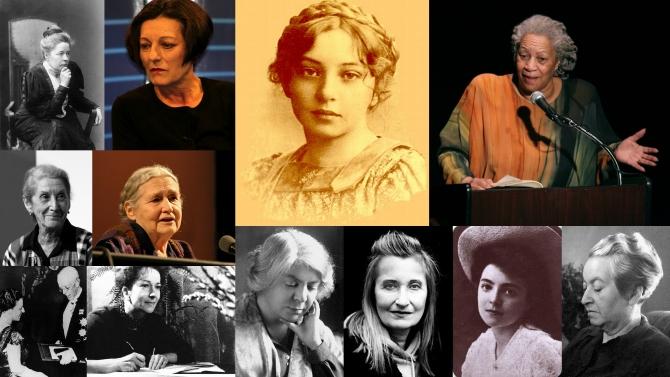
Author Alice Munroe won the Nobel Prize for Literature on Thursday. The 82-year-old became the first Canada-based writer to win the honour.
Munroe will be presented with her award at a formal ceremony in Stockholm on December 10, which is the anniversary of prize founder Alfred Nobel's death in 1896.
She is also the 13th woman to receive the Literature Nobel and the 110th Nobel Laureate.
Rediff.com takes a walk down the memory lane and showcases women who have won the coveted prize.
...
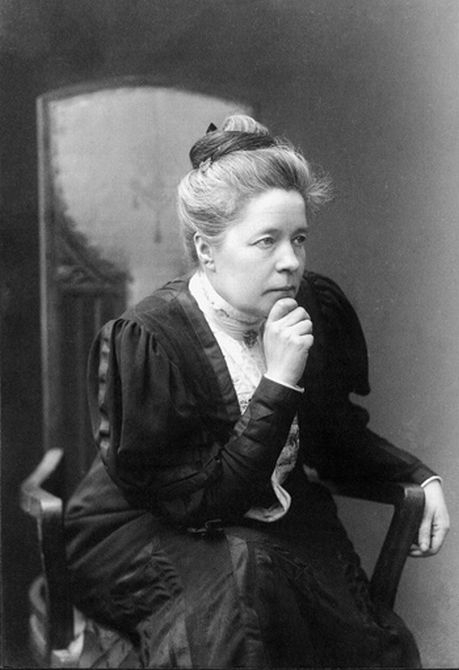
Selma Lagerlöf was born in Östra Emterwik, Värmland, Sweden in 1858.
She had been writing poetry ever since she was a child, but she did not publish anything until 1890, when a Swedish weekly gave her the first prize in a literary competition and published excerpts from the book which was to be her first, best, and most popular work.
Gösta Berlings Saga was published in 1891, but went unnoticed until its Danish translation received wide critical acclaim and paved the way for the book's lasting success in Sweden and elsewhere.
In 1895 financial support from the royal family and the SwedishAcademy encouraged her to abandon teaching altogether. After several minor works she published Jerusalem (1901-1902) [The Holy City], a novel about Swedish peasants who migrated to the Holy Land and whom she had visited in 1900.
This work was her first immediate success. A book intended as a primer for elementary schools became one of the most charming children's book in any language: Nils Holgerssons underbara resa genom Sverige (1906) [The Wonderful Adventures of Nils].
...

Born in Nuoro, Sardinia, Italy into a middle-class family, she attended elementary school and then was educated by a private tutor and moved on to study literature on her own.
She first published some novels in the magazine L'ultima moda when it still published works in prose and poetry. Nell'azzurro, published by Trevisani in 1890, might be considered as her first work.
Cenere was the inspiration for a movie with the famous Italian actress Eleonora Duse.
Deledda received her Nobel Prize one year later, in 1927. During the selection process in 1926, the Nobel Committee for Literature decided that none of the year's nominations met the criteria as outlined in the will of Alfred Nobel.
According to the Nobel Foundation's statutes, the Nobel Prize can in such a case be reserved until the following year, and this statute was then applied. Grazia Deledda therefore received her Nobel Prize for 1926 one year later, in 1927.
...
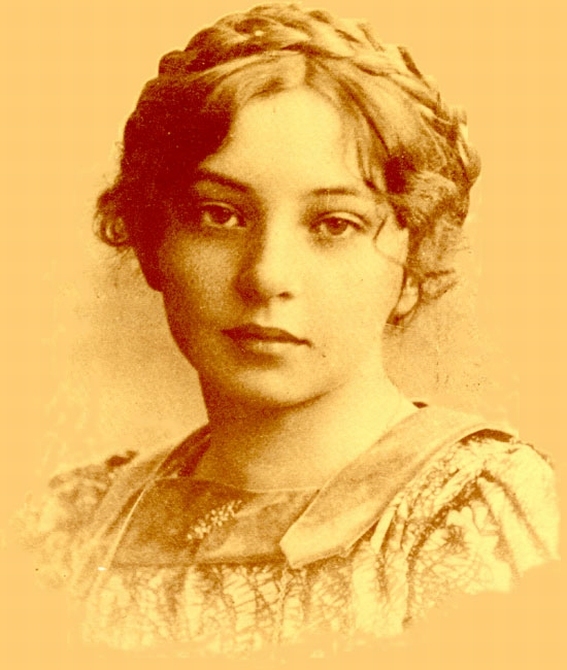
Undset was born in Kalundborg, Denmark, but her family moved to Norway when she was two years old. She fled Norway for the United States in 1940 because of her opposition to Nazi Germany and the German occupation, but returned after World War II ended in 1945.
Her best-known work is Kristin Lavransdatter, a trilogy about life in Scandinavia in the Middle Ages, portrayed through the experiences of a woman from birth until death. Its three volumes were published between 1920 and 1922.
Undset's Nobel Prize was awarded partly for this work, and partly for her four-volume work The Master of Hestviken, published between 1925 and 1927 and dealing with similar themes.

Pearl Sydenstricker was born in Hillsboro, West Virginia, to Caroline Stulting (1857–1921) and Absalom Sydenstricker. Her parents traveled to China soon after their marriage on July 8, 1880, but returned to the United States for Pearl's birth.
When Pearl was three months old, the family returned to China, first in Huai'an and then in 1896 moved to Zhenjiang, near Nanking.
Buck spent most of her life before 1934 in China. Her novel The Good Earth was the best-selling fiction book in the United States in 1931 and 1932, and won the Pulitzer Prize in 1932.
She was awarded the Nobel Prize in Literature "for her rich and truly epic descriptions of peasant life in China and for her biographical masterpieces."
...

Probably in about 1906, while working as a teacher, Mistral met Romelio Ureta, a railway worker, who killed himself in 1909. The profound effects of death were already in the poet's work; writing about his suicide led the poet to consider death and life more broadly than previous generations of Latin American poets.
While Mistral had passionate friendships with various men and women, and these impacted her writings, she was secretive about her emotional life.
She is so far, the only Latin American woman to win the Nobel Prize in Literature. Her portrait also appears on the 5,000 Chilean peso bank note.
...
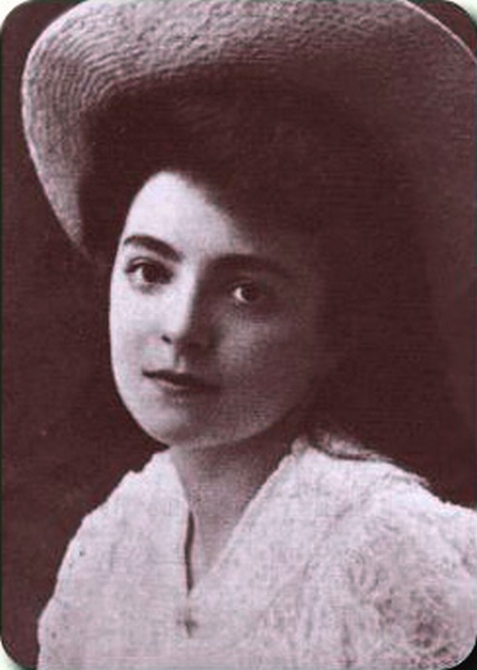
Sachs was a Jewish German poet and playwright whose experiences resulting from the rise of the Nazis in World War II Europe transformed her into a poignant spokeswoman for the grief and yearnings of her fellow Jews.
Her best-known play is Eli: Ein Mysterienspiel vom Leiden Israels (1950); other works include the poems "Zeichen im Sand" (1962), "Verzauberung" (1970), and the collections of poetry In den Wohnungen des Todes (1947), Flucht und Verwandlung (1959), Fahrt ins Staublose (1961), and Suche nach Lebenden (1971).
The Nobel Prize in Literature 1966 was divided equally between Shmuel Yosef Agnon "for his profoundly characteristic narrative art with motifs from the life of the Jewish people" and Nelly Sachs "for her outstanding lyrical and dramatic writing, which interprets Israel's destiny with touching strength".
...

Gordimer's writing has long dealt with moral and racial issues, particularly apartheid in South Africa. Under that regime, works such as July's People were banned. She was active in the anti-apartheid movement, joining the African National Congress during the days when the organisation was banned.
In 1951, the New Yorker accepted Gordimer's story "A Watcher of the Dead", beginning a long relationship, and bringing Gordimer's work to a much larger public. Gordimer, who has said she believes the short story is the literary form for our age,[7] has continued to publish short stories in the New Yorker and other prominent literary journals.
She has recently been active in HIV/AIDS causes.
...

As a child, Morrison read fervently; among her favorite authors were Jane Austen and Leo Tolstoy. Morrison's father told her numerous folktales of the black community (a method of storytelling that would later work its way into Morrison's writings).
Morrioson’s novels are known for their epic themes, vivid dialogue, and richly detailed characters. Among her best known novels are The Bluest Eye, Sula, Song of Solomon and Beloved.
She also was commissioned to write the libretto for a new opera, Margaret Garner, first performed in 2005. She won the Pulitzer Prize in 1988 for Beloved and the Presidential Medal of Freedom on 29 May 2012.
...
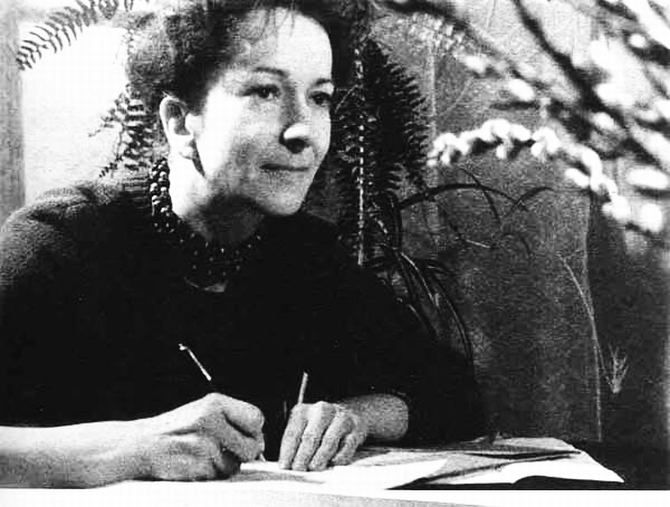
In March 1945, Szymborska published her first poem "Szukam słowa" ("Looking for words") in the daily Polish newspaper, Dziennik Polski. Her poems continued to be published in various newspapers and periodicals for a number of years.
In 1948, she quit her studies without a degree, due to her poor financial circumstances; the same year, she married poet Adam Włodek, whom she divorced in 1954 (they remained close until Włodek's death in 1986).
Her first book was to be published in 1949, but did not pass censorship as it "did not meet socialist requirements". Like many other intellectuals in post-war Poland, however, Szymborska adhered to the People's Republic of Poland's official ideology early in her career, signing an infamous political petition from 8 February 1953, condemning Polish priests accused of treason in a show trial.
...
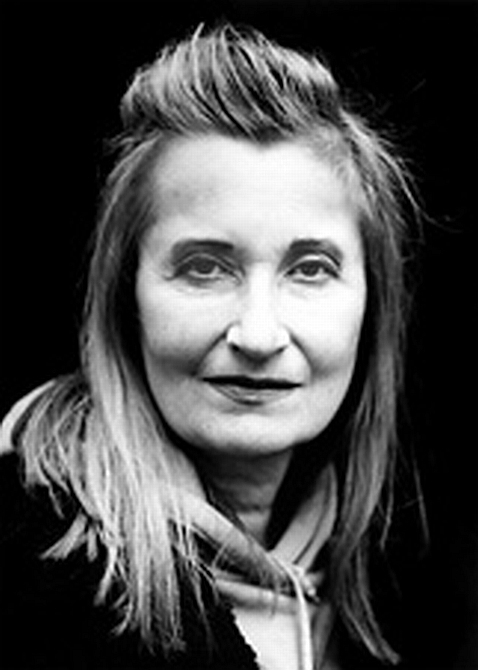
Jelinek started writing poetry at a young age. She made her literary debut with the collection Lisas Schatten (Lisa's Shadow) in 1967 and received her first literary prize in 1969.
Jelinek's work is multi-faceted and highly controversial. It has been by turns praised and condemned by leading literary critics. Her political activism encounters divergent and often heated reactions.
Despite the controversy surrounding her work, Jelinek has won many distinguished prizes; among them are the Georg Büchner Prize in 1998; the Mülheim Dramatists Prize in 2002 and 2004; the Franz Kafka Prize in 2004; and the Nobel Prize in Literature, also in 2004.
...
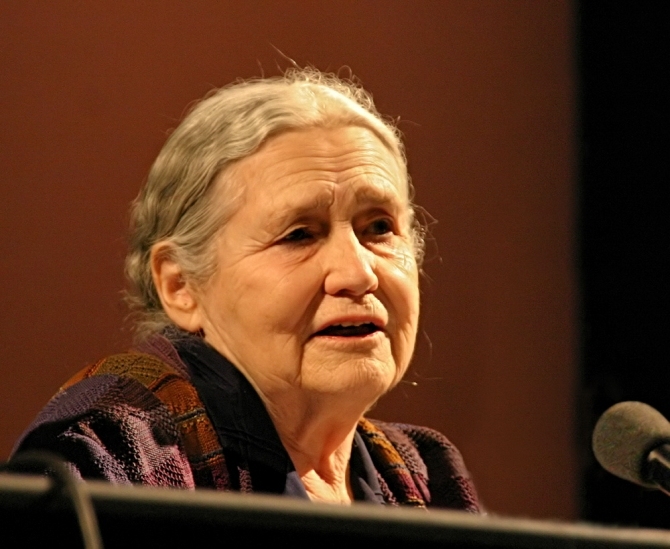
Lessing left school at the age of 14, and was self-educated from then on; she left home at 15 and worked as a nursemaid. She started reading material that her employer gave her on politics and sociology and began writing around this time.
Because of her campaigning against nuclear arms and South African apartheid, Lessing was banned from that country and from Rhodesia for many years.
She moved to London with her youngest son in 1949. Her first novel, The Grass is Singing, was published in 1950. Her breakthrough work, The Golden Notebook, was written in 1962.
She declined a damehood, but accepted appointment as a Companion of Honour at the end of 1999 for "conspicuous national service". She has also been made a Companion of Literature by the Royal Society of Literature.
...

Müller is noted for her works depicting the effects of violence, cruelty and terror, usually in the setting of Communist Romania under the repressive Nicolae Ceaușescu regime which she has experienced herself.
Many of her works are told from the viewpoint of the German minority in Romania and are also a depiction of the modern history of the Germans in the Banat, and Transylvania.
Her much acclaimed 2009 novel The Hunger Angel (Atemschaukel) portrays the deportation of Romania's German minority to Stalinist Soviet Gulags during the Soviet occupation of Romania for use as German forced labor.
The SwedishAcademy announced that she had been awarded the Nobel Prize in Literature, describing her as a woman "who, with the concentration of poetry and the frankness of prose, depicts the landscape of the dispossessed".
...